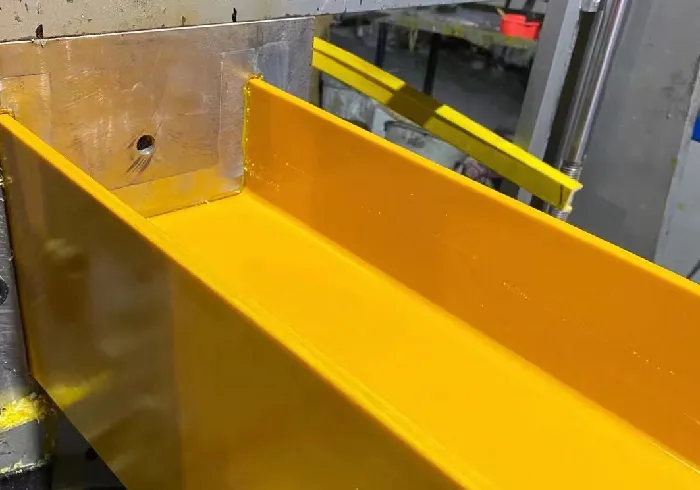loading...
- No. 9, Xingyuan South Street, Dongwaihuan Road, Zaoqiang County, Hengshui, Hebei, China
- admin@zjcomposites.com
- +86 15097380338
- Welcome to visit our website!
Understanding the Functionality and Importance of Water Pressure Tanks in Plumbing Systems
Understanding Water Pressure Tanks An Essential Component for Water Systems
Water pressure tanks play a crucial role in the efficient delivery of water in residential and commercial settings. These tanks are designed to provide consistent water pressure while ensuring that plumbing systems operate smoothly. Understanding how water pressure tanks work, their benefits, and their maintenance requirements can help homeowners and businesses make informed decisions about their water systems.
What is a Water Pressure Tank?
A water pressure tank, often referred to as a well pressure tank, is a storage unit that holds water and maintains pressure in a water system. Typically found in well water systems, these tanks are connected to a pump that draws water from underground sources. They come in various sizes and materials, but the most common types are the bladder tanks and diaphragm tanks.
The tank contains a sealed air compartment that is divided from the water compartment. As water is pumped into the tank, it compresses the air in the sealed compartment, creating pressure. This pressure pushes the water out when a faucet is opened or a pipe is used. As a result, water is available on-demand without the need for the pump to run continuously, which not only saves energy but also prolongs the life of the pump.
Benefits of a Water Pressure Tank
1. Consistent Water Pressure A well-functioning pressure tank ensures that water is delivered at a consistent pressure throughout the system. This is crucial for maintaining the performance of appliances such as dishwashers, washing machines, and showerheads.
2. Energy Efficiency By reducing the number of times the pump needs to turn on and off, pressure tanks help save energy. The pump only operates when the water level in the tank drops below a certain threshold, which can lead to considerable energy savings over time.
3. Prevention of Water Hammer Water pressure tanks help mitigate the effects of water hammer—an unsettling banging noise that occurs when water abruptly stops or changes direction in pipes. By maintaining steady pressure, the tank minimizes pressure surges in plumbing systems.
4. Reduced Wear and Tear on Pumps Continuous cycling of a water pump can lead to wear and tear. By dampening fluctuations in water demand, a pressure tank can extend the lifespan of the pump and reduce the frequency of maintenance and repairs.
water pressure tank

5. Improved Water Quality Some pressure tanks can help filter out impurities, thereby improving the quality of the water delivered to homes or businesses. A good filtration system combined with a pressure tank can ensure that clean and safe water is always accessible.
Maintenance and Care of Water Pressure Tanks
While water pressure tanks are relatively low-maintenance, some routine checks and maintenance tasks are essential to ensure their optimal performance. Here are some tips for maintaining a water pressure tank
1. Check Air Pressure The air pressure in the tank should be measured periodically, typically when the water level is low. The ideal air pressure is usually set between 2-3 psi below the cut-in pressure of the pump. If the air pressure is too low, the tank may not function effectively, leading to higher energy consumption and reduced water pressure.
2. Inspect for Leaks Regularly inspect the tank and its connections for any signs of leaks. A leaking tank can reduce efficiency and lead to water waste. Address any leaks immediately to prevent further issues.
3. Check the Bladder or Diaphragm For bladder tanks, it’s important to ensure that the bladder is intact and functioning properly. A damaged bladder can cause waterlogging and reduce efficiency. If you suspect an issue, consult a professional for evaluation.
4. Annual Professional Inspection Hiring a professional to inspect the system annually can help identify potential issues before they become major problems. An expert can perform tests to ensure proper pressure levels and check the overall operation of the pump and tank.
Conclusion
Water pressure tanks are essential components of water systems that enhance performance, efficiency, and convenience in water delivery. Understanding their function, benefits, and maintenance can empower homeowners and businesses to make informed decisions about their water systems and ensure a reliable supply of water. Regular maintenance and inspections can prolong the lifespan of pressure tanks and ensure that they operate effectively, contributing to an overall efficient plumbing system. Embracing the technology behind water pressure tanks is crucial for achieving a consistently comfortable and functional water supply.
-
Transform Your Spaces with FRP Grating SolutionsNewsNov.04,2024
-
The Versatility and Strength of FRP RodsNewsNov.04,2024
-
The Excellence of Fiberglass Water TanksNewsNov.04,2024
-
The Benefits of FRP Grating for Your ProjectsNewsNov.04,2024
-
Elevate Your Efficiency with FRP Pressure VesselsNewsNov.04,2024
-
Welcome to the World of FRP Pressure VesselsNewsOct.12,2024
-
Unveiling the Future of Filtration: Why FRP Filter Vessels are a Game ChangerNewsOct.12,2024
